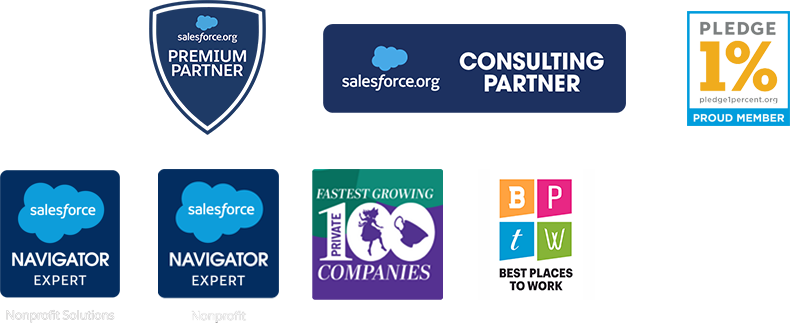Better Together: How Team Testing Boosts Software Implementation Success
When implementing software with an implementation partner, client testing is crucial for project success. But how can clients improve their testing processes to enhance the likelihood of a successful launch and user adoption? As a consultant, I’ve worked with many nonprofits of varying sizes and organizational cultures. Through numerous projects, I’ve observed a consistent trend among clients who achieve successful launches and high user adoption rates: they test as a team across different functional areas rather than individually.
The Process: Comparing Team Testing vs. Solo Testing
When implementing new software, one of the client’s primary responsibilities is to test the software and provide feedback to the implementation team. If you’re unfamiliar with the testing process for most software implementations, it generally follows these steps:
- The implementation team completes a set amount of work, typically defined within a sprint.
- The implementation team provides the client with a demonstration and test scripts (instructions for testing).
- The client uses these test scripts to evaluate the quality of the work. If any bugs are found, the client submits a feedback record (e.g., a ticket or case) to the implementation team for resolution.
- The implementation team resolves the feedback records.
- This process repeats iteratively.
Client testing is critical to improving the quality of the final solution. It also enhances user knowledge and capabilities—key factors in driving better adoption of the new system.
The most common approach to client testing, which I call “solo testing,” involves assigning test scripts to individual testers who conduct their testing independently. Testers schedule their own time, evaluate their own work, log feedback, and share their findings in meetings.
Key characteristics of solo testing:
- Each tester is fully responsible for testing their own work at their own pace and schedule.
- Each tester evaluates only work related to their functional department.
- Feedback is shared during meetings or asynchronously.
While this method can be effective, it’s worth comparing it to “team testing.”
What is team testing? Team testing assigns test scripts to individual testers but introduces a collaborative element. The client schedules meetings where testers collaborate in real time to perform and discuss testing. Testers pass test records upstream and downstream to teammates and address issues as they arise. If unresolved problems persist, they log feedback records. By the end of each session, all testers understand each other’s progress, reducing the need for follow-up reports.
Key features of team testing:
- Testers participate in pre-scheduled collaborative sessions.
- Each tester is responsible for their tasks while contributing insights to others’ assignments.
- Real-time collaboration keeps the entire team informed about submitted feedback and progress.
Real-World Example: A Grantmaking Nonprofit
Consider a nonprofit grantmaking organization with three primary departments: Grantmaking, Outcomes, and Finance. In team testing, the client lead schedules weekly collaborative meetings for stakeholders from each department.
During these sessions, the testers:
- Observe a Grantmaking team member reviewing a test grant application, testing various functionalities, and ultimately approving the record.
- Watch the Finance team receive the approved test record and process it to prepare a disbursement.
- Follow the Outcomes team as they review the test grant, application, and grantee organization to implement their outcomes-tracking methodology.
This collaborative approach exposes each team to the overall process, allowing them to understand how different teams interact with the system and data. For instance:
- The Grantmaking team’s process impacts how the Outcomes team tracks results.
- The Finance team gains insight into the approval process and its connection to disbursement triggers.
By participating in team testing, members from each department learn how their work influences others, fostering a deeper understanding and smoother adoption of the new system.
Benefits of Team Testing
1. Better Feedback
Team testing enables testers to answer each other’s questions and address potential feedback before it’s escalated to the implementation team. This reduces contradictory feedback and minimizes rework.
In solo testing, users often submit feedback specific to their own processes, which can lead to conflicting requests. In the worst-case scenario, the implementation team implements a change for Team A that later causes problems for Team B, resulting in wasted time and resources. In contrast, team testing allows for instant internal feedback, ensuring that requests submitted to the implementation team are well-considered and mutually agreed upon.
2. Improved Collaboration
Team testing fosters connections among team members, particularly across departments. In solo testing, individuals focus solely on their assigned tasks. However, in team testing, testers engage with others, gaining exposure to a variety of perspectives and challenges. This interaction enhances platform knowledge, improves processes, and builds stronger team relationships.
3. Increased Accountability
Team testing requires the client to schedule dedicated time for testing. Coordinating calendars and sending invitations ensures the right people are present and signals the importance of the task. This social accountability increases the likelihood that testing occurs as planned, rather than being postponed due to competing priorities.
Give Team Testing a Try!
While team testing isn’t a guaranteed solution for project success, it offers significant benefits. Clients who adopt this approach often report:
- Creative solutions to challenges that save time and money.
- Higher-quality solutions due to increased accountability.
- Improved cross-departmental collaboration and understanding.
If you’re preparing for a software implementation project, consider the extra effort required to test as a team. With proactive planning and collaboration, you’ll set your organization up for a more successful launch and better user adoption. To receive a monthly digest of tech tips and best practices, sign up for our newsletter below!















